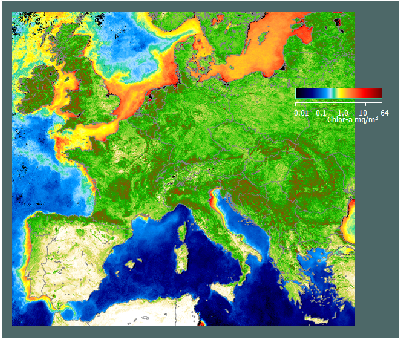European Directives
So far protection in European waters has been mainly achieved through the establishment of two types of protected areas:
Special Protected Areas (SPAs) for birds which are put in place through the Birds Directive (79/409/EEC); and
Special Areas of Conservation for habitats and species, which are put in place through the Habitats Directive (92/43/EEC).
The European Marine Strategy (EMS) is one of the thematic strategies in the sixth European Environmental Action Plan,
aiming to achieve a sustainable balance between the use and protection of all European marine areas. A key element in this strategy,
mainly focusing on reducing the impact of fishing and other anthropogenic pressures on marine ecosystems, is the establishment of
Marine Protected Areas (MPAs) at local, regional and global levels.
European Directives ↓
↑
Because they provide consistent agreed indicators across national boundaries,
remotely sensed products may be critical for monitoring performance under international agreements and conventions.
For example, the European Union has established environmental directives which require monitoring of coastal water quality indicators,
including transparency, colour and suspended solids. Ocean-colour sensors are recognized as offering a standard,
cost-effective way to monitor compliance.
| Directive |
Subject of concern |
Variables to be monitored |
| 76/160/EEC |
Quality of bathing water |
Coliforms, thermo-tolerant colibacteria,transparency, pH, faecal Streptococcus |
| 79/923/EEC |
Quality required of shellfish waters |
Salinity, oxygen, pH, temperature, colour, suspended material, hydrocarbons, coliforms,... |
| 91/271/EEC |
Urban waste treatment |
Biological Oxygen Demand, suspended solids, total phosphorus, total nitrogen |
Source: IOCCG

Eutrophied seas around the European continent
Source: EEA - JRC

